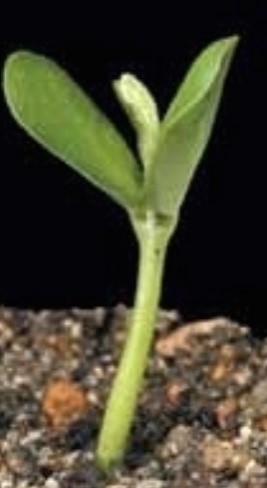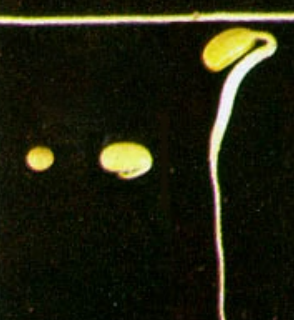A soybean seed is like a soldier, receiving very specific instructions on what things to do and when to do them. However, unlike a traditional soldier, a soybean seed must do this without hearing verbal instructions or seeing a demonstration of what it should be doing. All of the soybean’s actions—what to do and when—are pre-built into its DNA.


For example, once a seed has taken in enough moisture and heat, (seed-to-soil contact) germination has begun. The seed will swell and eventually give rise to the cotyledon. Once emerged, the cotyledon helps pull in sunlight for photosynthesis and stores energy until the roots and unifoliate leaves develop and become fully functional. The hypocotyl elongates to pull the cotyledon out of the soil. Stress during this time can determine the vigor of each plant or an entire field.
Damage during this time could occur from:
- Seeding disease (cool/wet soils)
- Soil crusting (dry)
- Hail damage
- Some herbicides can cause browning of the cotyledon’s edges
What’s the importance of knowing soybean growth stages?
- Proper identification of disease
- Proper identification of insects
- Proper label recommendations for herbicides (post emergence)
- When to scout for nodulation
- When to scout for SCN
- Is the current situation a major or minor risk to maximum yield?
- Gives indication of what to look for next
In production agriculture, there are so many variables that we can’t control. However, we can build a good production system that eliminates several big-ticket items. By bringing good agronomy back into the production system, producers can become more aware of the current risk to and future needs of a crop. By working with an Illinois CCA, you can leverage their skill and industry knowledge to be proactive against the seasonal challenges.

 For example, once a seed has taken in enough moisture and heat, (seed-to-soil contact) germination has begun. The seed will swell and eventually give rise to the cotyledon. Once emerged, the cotyledon helps pull in sunlight for photosynthesis and stores energy until the roots and unifoliate leaves develop and become fully functional. The hypocotyl elongates to pull the cotyledon out of the soil. Stress during this time can determine the vigor of each plant or an entire field.
For example, once a seed has taken in enough moisture and heat, (seed-to-soil contact) germination has begun. The seed will swell and eventually give rise to the cotyledon. Once emerged, the cotyledon helps pull in sunlight for photosynthesis and stores energy until the roots and unifoliate leaves develop and become fully functional. The hypocotyl elongates to pull the cotyledon out of the soil. Stress during this time can determine the vigor of each plant or an entire field.

 and then
and then